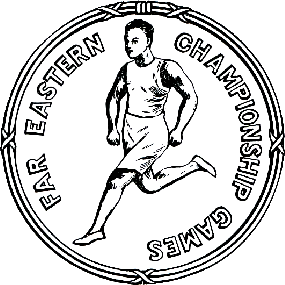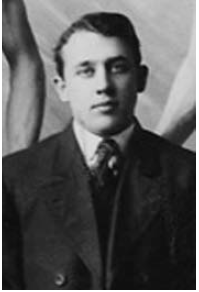| Host city | Manila, Philippines |
|---|---|
| Nations | 4 |
| Opening | 16 May 1934 |
| Closing | 20 May 1934 |
| Main venue | Rizal Memorial Field [1] |
The 1934 Far Eastern Championship Games was the tenth edition of the regional multi-sport event, contested between China, Japan and the Philippines, and was held from 16 to 20 May in Manila, the Philippines. A total of eight sports were contested during the four-day competition. The Dutch East Indies (Indonesia) participated in the games, becoming only the second nation outside of the traditional three to send a delegation to the event (after India in 1930). [2] The games were held at the then newly built sports complex, Rizal Memorial Field which was constructed on the former site of the Manila Carnival Grounds. [1]
Official women's events were featured on the programme for the first time. Although some women's activities had been included since 1921, this marked the first occasion that women's sports were given parity with men's contest and was treated as part of the official medal count and points tables. [3] The swimming programme featured at least four different events for women. [4]
China won its ninth straight title in the football competition. [5]
This was the last Far Eastern Championship Games. Poor relations between China and Japan disrupted the working of the Far Eastern Athletic Association (the organising body for the games). Before the games, Japanese delegations repeatedly suggested to the Chinese that Manchukuo compete as an independent team at the forthcoming competition. This greatly angered the Chinese, given that Manchukuo had been operated as a puppet state following the Japanese invasion of Manchuria in 1931. [3] The 11th Far Eastern Championship Games was scheduled to be held in 1938 in Osaka, Japan, but was cancelled after the 1937 outbreak of the Second Sino-Japanese War. [6] Given the warring of two of its three member nations, the Far Eastern Athletic Association was rendered defunct.
The holding of the first Western Asiatic Games in 1934 demonstrated an increasing desire for Asian-led international multi-sport events. Following the end of World War II, the Asian Games was created in 1951 and featured two of the former Far Eastern groups – Japan and the Philippines. Initially an event between Western-aligned nations, it was not until the 1974 Asian Games that China, Japan and the Philippines appeared together at the tournament, which came after a vote by the Asian Games Federation to exclude the Republic of China (Taiwan) in favour of the People's Republic of China. [7]
Ofer Idels (2021) How to lose gracefully in an internationally selfish world: gender, the “New Jew” and the underestimation of athletic performance in interwar Palestine, Journal of Modern Jewish Studies

The Asian Games, also known as Asiad, is a continental multi-sport event held every fourth year among athletes from all over Asia. The Games were regulated by the Asian Games Federation (AGF) from the first Games in New Delhi, India in 1951, until the 1978 Games. Since the 1982 Games, they have been organized by the Olympic Council of Asia (OCA), after the breakup of the Asian Games Federation. The Games are recognized by the International Olympic Committee (IOC) and are described as the second largest multi-sport event after the Olympic Games.

The 1954 Asian Games, officially known as the Second Asian Games – Manila 1954 was a multi-sport event held in Manila, Philippines, from May 1 to 9, 1954. A total of 970 athletes from 19 Asian National Olympic Committees (NOCs) competed in 76 events from eight sports. The number of participating NOCs and athletes were larger than the previous Asian Games held in New Delhi in 1951. This edition of the games has a different twist where it did not implement a medal tally system to determine the overall champion but a pointing system. The pointing system is a complex system where each athlete were given points according to their achievement like position in athletics or in swimming. In the end the pointing system showed to be worthless as it simply ranked the nations the same way in the medal tally system. The pointing system was not implemented in future games ever since. Jorge B. Vargas was the head of the Philippine Amateur Athletic Federation and the Manila Asian Games Organizing Committee. With the second-place finish of the Philippines, only around 9,000 spectators attended the closing ceremony at the Rizal Memorial Stadium. The events were broadcast on radio live at DZRH and DZAQ-TV ABS-3 on delayed telecast.
The Philippines national football team represents the Philippines in international football, governed by the Philippine Football Federation (PFF) and has been playing internationally since 1913.
The 1915 Far Eastern Championship Games was the second edition of the regional multi-sport event, contested between China, Japan and the Philippines, and was held from 15 to 22 May 1915 in Shanghai, Republic of China. A total of nine sports were contested – the inclusion of cycling increased the total from the eight held at the first edition. This marked the first time that the event was held under its Far Eastern Championship Games moniker, followed a change from the naming as the Oriental Olympic Games in 1913.
The 1919 Far Eastern Games was the fourth edition of the regional multi-sport event, contested between China, Japan and the Philippines, and was held from 12 to 16 May 1919 in Manila, the Philippines. A total of eight sports were contested over the course of the five-day event.
The 1921 Far Eastern Championship Games was the fifth edition of the regional multi-sport event, contested between China, Japan and the Philippines, and was held from 30 May to 3 June in Shanghai, Republic of China. A total of eight sports were contested over the course of the five-day event. India, Malaya, Siam (Thailand), Ceylon and Java were all invited to participate at the games, but did not do so due to the expense of sending teams to Shanghai.
The 1923 Far Eastern Championship Games was the sixth edition of the regional multi-sport event, contested between China, Japan and the Philippines, and was held from 21–25 May in Osaka, Empire of Japan. It was the first and only time that Osaka hosted the event, marking a departure of the capital Tokyo being the traditional Japanese venue. Java, Thailand and French Indochina were invited to compete, but declined. A total of eight sports were contested over the course of the five-day event.
The 1925 Far Eastern Championship Games was the seventh edition of the regional multi-sport event, contested between China, Japan and the Philippines, and was held from 17 to 22 May in Manila, the Philippines. A total of eight sports were contested over the course of the five-day event.
The 1927 Far Eastern Championship Games was the eighth edition of the regional multi-sport event, contested between China, Japan and the Philippines, and was held from 28–31 August 1927 in Shanghai, Republic of China. A total of eight sports were contested during the four-day competition. This was the last time the competition was held on a biennial schedule and the event subsequently changed to a quadrennial basis, being held in the even years between Olympic competitions.
The 1930 Far Eastern Championship Games was the ninth edition of the regional multi-sport event and was held from 24 to 27 May 1930 in Tokyo, Empire of Japan. A total of eight sports were contested over the course of the five-day event.

The Far Eastern Championship Games was an Asian multi-sport event considered to be a precursor to the Asian Games.

Sports in the Philippines is an important part of the country's culture. There are six major sports in the Philippines: basketball, boxing, tennis, football, billiards, and volleyball.

The Rizal Memorial Track and Football Stadium is the main stadium of the Rizal Memorial Sports Complex in Manila, Philippines. It served as the main stadium of the 1954 Asian Games and the Southeast Asian Games on three occasions. The stadium is also officially the home of the Philippines national football teams and domestic matches.

Association Football and Basketball are the most popular sports in Asia. Cricket is the third most popular sport in Asia, and is most popular in South Asia. Other popular sports in Asia include baseball, badminton and table tennis among others. There are also some traditional sports that are popular in certain regions of Asia, such as the South Asian sports kabaddi and kho-kho, and sepak takraw in Southeast Asia. Top sporting nations/regions in Asia include China, Japan, South Korea, Taiwan, India, Iran, Kazakhstan and Uzbekistan.

The Rizal Memorial Baseball Stadium is a baseball stadium located inside the Rizal Memorial Sports Complex in Manila, Philippines. It has a seating capacity of 10,000.

Football in the Philippines is administered by the Philippine Football Federation (PFF), the governing body of football in the country.

Elwood Stanley Brown was an American sports administrator, and basketball coach. As a leader in the YMCA, he promoted sports in the Philippines, helped establish the Far Eastern Games, and began the first Boy Scout troops in the Philippines. He also helped organize the American Expeditionary Forces Games and the Inter-Allied Games. Brown worked closely with Pierre de Coubertin and the International Olympic Committee in propagating the Olympic Games through the YMCA.
Athletics was one of the sports at the biennial Far Eastern Championship Games. Athletics competitions were held at every one of the ten editions of the games, which existed between 1913 and 1934. This represented the first time that a regular major international athletics competition occurred between Asian nations. It was later succeeded by athletics at the Asian Games, which began in 1951.
The East Asian Games, also known as the Asian Development Games were multi-sport events organized by the Japan Association of Athletics Federations (JAAA). The games were meant to be a replacement to the cancelled 1938 Far Eastern Championship Games and 1940 Summer Olympics originally to be hosted by Japan, and also served as a propaganda tool for Japan.
Region R. Ylanan was a Filipino athlete, physician, sports administrator, physical educator, and sports historian. He rose to fame with three gold medals in track and field at the 1913 Far Eastern Championship Games in Manila. He won two further medals at the 1915 Games and also represented his country in baseball at three editions of the tournament.